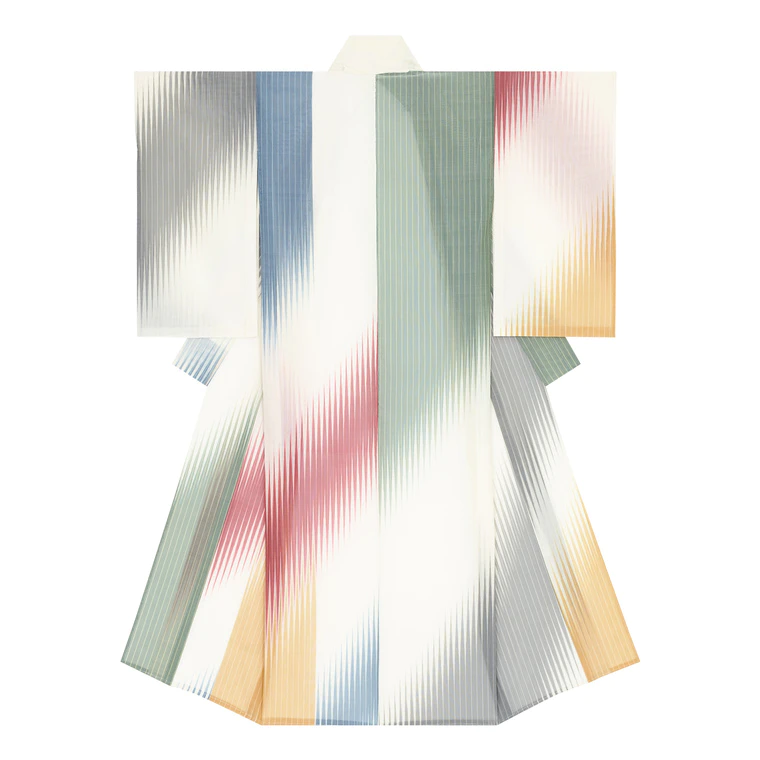Kimono of figured gauze."Searching Flowers"
Year.2019Yoshinori Tsuchiya
1954 -- Textiles(Living National Treasure)
-
Price Range
$7,000 - 35,000
Info
The prices of the artworks on Gallery Japan are determined by the artists themselves and are published directly on the website.
close - Awards at Japan Kōgei Assoc. Exhibitions : 7
About the Artwork
"Searching Flowers" is a story about a handsome young man who was a high achiever in the Imperial examination held during the Tang dynasty in China, being ordered to search for beautiful flowers all over the city. I used vivid and transparent plant dye colors, and used white effectively to make the colors stand out more beautifully.
Description
-
CategoryTextiles
-
MaterialsRaw silk (Unrefined silk thread)
Warp threads - 4 among 21 two-folded
Weft threads - 6 among 21 twisted
Dye
Red - Indian madder
Yellow - cape jasmine
Blue - indigo
Green - indigo + cape jasmine -
Year presented2019
-
RarityUnique
Techniques Used
Kasuri weaving
Kasuri weaving (kasuriori, “blurred weave”) is a type of ikat weaving done with threads that have been resist dyed, leaving sections of the thread undyed. The threads are then aligned and woven to create stripes, checkered patterns, or pictorial motifs.
Selected exhibitions
- The 66th Japan Traditional Kōgei Exhibition (2019)
- Selected

